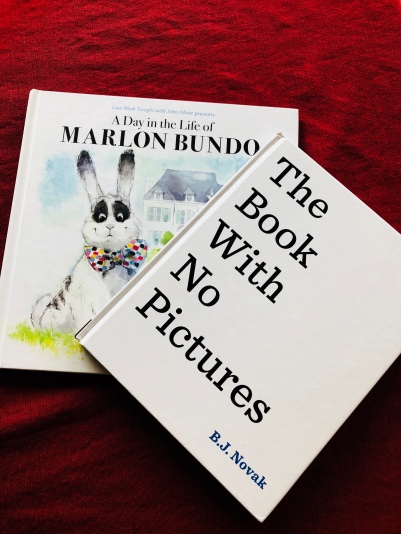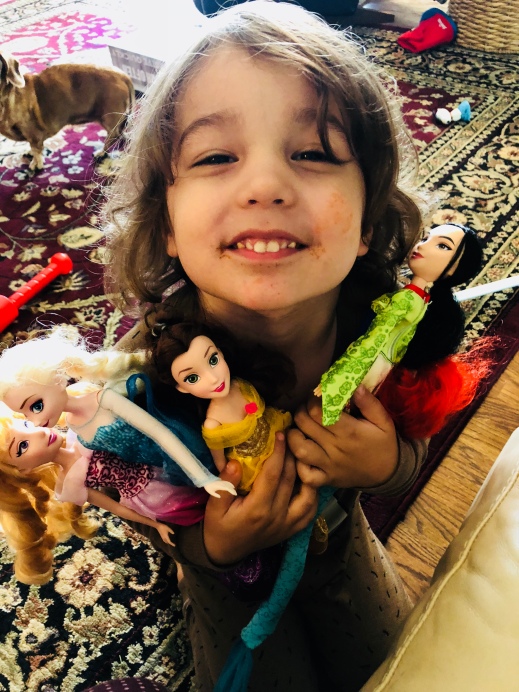A dear cousin of mine with a heart of gold and less time to herself than even I have, recently reached out to me with a blog suggestion: a recommended reading list and tutorial on how to find the time to read amidst a heaping helping of tiny humans running ’round the house.
Alas, I have plenty of recommended reads – just not too many suggestions on how to get them read while driving the juggernaut that IS motherhood with multiples. When you have two boys who are wilder than wildebeests revved up on red dye number 5, and a husband you don’t see often enough as it is, and the rather lofty goal of one blog per week to write (and writing comes slower and less-steady than a tortoise in a muck of molasses), plus a full-time job with unwieldy demands of its own, you just don’t get much reading done – or at least not the way I used to before twins. But I do accomplish a tad bit of reading — every, single night.
I’m talking about reading children’s books. To my little lads. At bedtime. And while that may not be the kind of recommended reading list my sweet cousin had in mind for my blog, I do have a couple of selections I am eager to share with you.
Both promote imagination, instill empathy, and most importantly of all, fortify young minds for the eventual challenges of adulthood.
The first is BJ Novak’s The Book with No Pictures. It is a piece of literary brilliance that sparkles with silliness and sass. It is all about the value and FUN of reading books without – you guessed it – PICTURES!
Now, as a literature teacher, reading is my bread and butter. And sadly, there are whole populations of students who take pride in the fact that they no longer read. They take pride in their own ignorance. And I’m sorry, but pride should be reserved for accomplishments and sexual preference, not ignorance! (But more on that in selection number two…)
As for The Book With No Pictures, it is full of colorful language and diversity. And I mean that literally — as in, there are lots of words in lots of different colors and lots of different fonts and sizes. There’s also an abundance of negative space on nearly every page. Novak’s book juxtaposes pared-down pages with wild and whimsical wording. The result is a little book making a big splash with a big message: Words. Are. Powerful.
And it is so true. Words are powerful, whether written or spoken. Because make no mistake about it, Novak’s book is meant to be read aloud. By adults. To kids.
Words can make us “say silly things and make silly sounds.” They can make us laugh, and sing, and see heads “made of blueberry pizza.”
Words can empower. And words can manipulate.
Words can make us believe in ourselves — or believe just the opposite.
Words are so very, very, VERY powerful.
And Novak’s work makes sure we realize their power. And my use of the word work here is quite calculated — because with good books, reading is far from passive. It should make you work. It should provoke thought and promote action. And this book stirs kids to action at a very young age. It dares them to listen, to create, to imagine, to believe.
So we’ve read our boys BJ Novak’s A Book With No Pictures nearly every night for over a year to cultivate their imaginations.

The second book in my preschool recommended reading list is A Day in the Life of Marlon Bundo, by Jill Twiss. This one is a fairly recent find for our family. (In fact, it was only published in mid-March.) My big-hearted baby sis gave it to our boys as a birthday present. And just as we read A Book With No Pictures to cultivate active imaginations, we read Marlon Bundo to cultivate good humans.
Twiss’s book is a parody of one written by Mike Pence and featuring the pet BOTUS (Bunny of the United States), Marlon Bundo. But rather than telling the story of the bunny and his Vice President-owner, Twiss features Marlon Bundo and the love of his life, Wesley, whom he meets while hopping ‘round the grounds of the U.S. Naval Observatory. Twiss wrote it to counter the homophobia promoted by Pence and (for the most part) his political party.
Marlon Bundo sports a bow tie and Wesley wears spectacles, and they fall madly in love and want to live hoppily ever after. So they decide to marry. And their friends – like all good friends do – say, “Hooray!” But the establishment — namely, a giant Stink Bug who is In Charge and Important (even though nobody is really sure why he’s In Charge or Important) – says, “YOU CAN’T GET MARRIED!” He denies their right to love, to marriage, and to the pursuit of hoppiness. But after some lessons in electoral science as it should function — every vote counts! — the bunnies are successfully wed.
We’ve been reading this book to our boys every night for the last three months — not to promote our own political viewpoints or our dislike of the current administration (although that’s an added perk), but to teach our boys that Love is Love is Love is Love.
Because when you have several members of your extended family who share a love that the Stink Bug declares WRONG — as well as a four-year-old son who loves Disney princesses with a passion traditionally acceptable only if you are a girl — it is important to us that our boys know and understand that love is never wrong.

So yes, we read A Day in the Life of Marlon Bundo every night, and we hear that “Boy bunnies can marry boy bunnies and girl bunnies can marry girl bunnies” and that being “Different is not bad.”
After all, each of us is different in some way, shape, or manner…
And that is a very good thing.
And so is the fact that “Stink Bugs are temporary,” but “Love is forever.”
So there you have it. These are the two books currently on our postmodern family’s recommended reading list for progressive preschoolers. Hopefully they will cultivate bookworms out of your own little wiggle worms. And in so doing, also cultivate great humans with really good hearts and really solid senses of humor.


June 2, 2018 at 8:01 pm
I don’t know what progressive preschoolers are exactly but I like the idea.
LikeLiked by 1 person
June 2, 2018 at 8:04 pm
I guess I’m hoping to teach them to be open and accepting of differences and to always be kind and considerate.
LikeLike